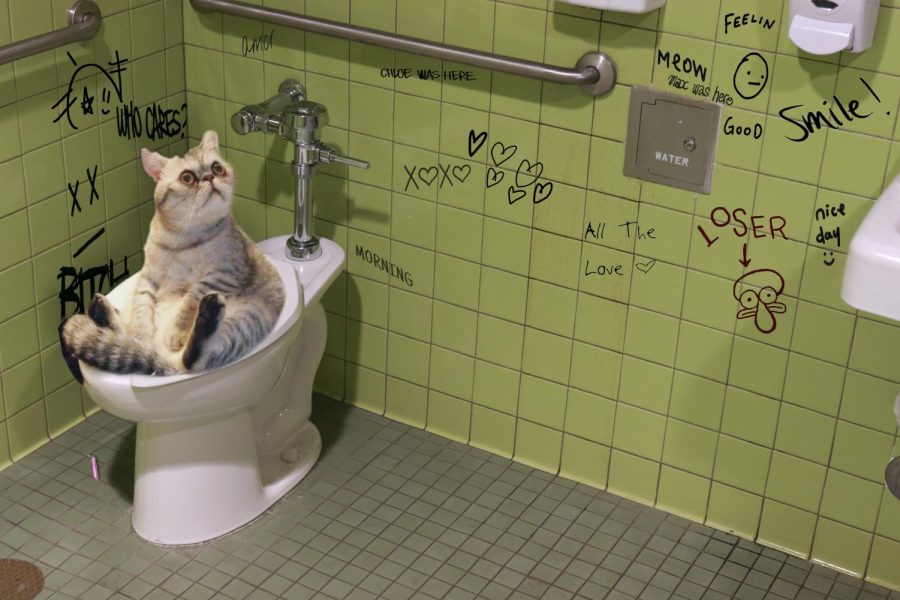Hazards of Flushing Cat Poop Down Your Toilet - Avoid Possible Issues
Hazards of Flushing Cat Poop Down Your Toilet - Avoid Possible Issues
Blog Article
What're your opinions on Can You Flush Cat Poo or Litter Down the Toilet??

Intro
As pet cat owners, it's necessary to bear in mind just how we dispose of our feline pals' waste. While it might appear hassle-free to flush cat poop down the commode, this method can have harmful repercussions for both the atmosphere and human wellness.
Alternatives to Flushing
Luckily, there are safer and extra responsible ways to get rid of cat poop. Take into consideration the following choices:
1. Scoop and Dispose in Trash
One of the most common approach of getting rid of cat poop is to scoop it right into a biodegradable bag and throw it in the garbage. Be sure to make use of a dedicated trash inside story and get rid of the waste quickly.
2. Usage Biodegradable Litter
Opt for naturally degradable cat litter made from products such as corn or wheat. These litters are environmentally friendly and can be securely dealt with in the trash.
3. Hide in the Yard
If you have a backyard, consider burying feline waste in an assigned location far from veggie yards and water sources. Be sure to dig deep enough to avoid contamination of groundwater.
4. Set Up a Pet Waste Disposal System
Purchase a family pet garbage disposal system specifically designed for pet cat waste. These systems make use of enzymes to break down the waste, minimizing odor and environmental influence.
Wellness Risks
In addition to environmental problems, purging cat waste can also pose wellness dangers to humans. Feline feces may have Toxoplasma gondii, a bloodsucker that can create toxoplasmosis-- a possibly extreme illness, particularly for pregnant women and people with damaged body immune systems.
Environmental Impact
Purging cat poop introduces hazardous virus and parasites right into the water supply, posing a substantial danger to aquatic environments. These contaminants can negatively influence aquatic life and compromise water quality.
Final thought
Liable pet ownership extends beyond supplying food and sanctuary-- it likewise entails correct waste monitoring. By avoiding purging pet cat poop down the commode and going with different disposal techniques, we can lessen our environmental footprint and protect human wellness.
Why Can’t I Flush Cat Poop?
It Spreads a Parasite
Cats are frequently infected with a parasite called toxoplasma gondii. The parasite causes an infection called toxoplasmosis. It is usually harmless to cats. The parasite only uses cat poop as a host for its eggs. Otherwise, the cat’s immune system usually keeps the infection at low enough levels to maintain its own health. But it does not stop the develop of eggs. These eggs are tiny and surprisingly tough. They may survive for a year before they begin to grow. But that’s the problem.
Our wastewater system is not designed to deal with toxoplasmosis eggs. Instead, most eggs will flush from your toilet into sewers and wastewater management plants. After the sewage is treated for many other harmful things in it, it is typically released into local rivers, lakes, or oceans. Here, the toxoplasmosis eggs can find new hosts, including starfish, crabs, otters, and many other wildlife. For many, this is a significant risk to their health. Toxoplasmosis can also end up infecting water sources that are important for agriculture, which means our deer, pigs, and sheep can get infected too.
Is There Risk to Humans?
There can be a risk to human life from flushing cat poop down the toilet. If you do so, the parasites from your cat’s poop can end up in shellfish, game animals, or livestock. If this meat is then served raw or undercooked, the people who eat it can get sick.
In fact, according to the CDC, 40 million people in the United States are infected with toxoplasma gondii. They get it from exposure to infected seafood, or from some kind of cat poop contamination, like drinking from a stream that is contaminated or touching anything that has come into contact with cat poop. That includes just cleaning a cat litter box.
Most people who get infected with these parasites will not develop any symptoms. However, for pregnant women or for those with compromised immune systems, the parasite can cause severe health problems.
How to Handle Cat Poop
The best way to handle cat poop is actually to clean the box more often. The eggs that the parasite sheds will not become active until one to five days after the cat poops. That means that if you clean daily, you’re much less likely to come into direct contact with infectious eggs.
That said, always dispose of cat poop in the garbage and not down the toilet. Wash your hands before and after you clean the litter box, and bring the bag of poop right outside to your garbage bins.
https://trenchlesssolutionsusa.com/why-cant-i-flush-cat-poop/

As a keen person who reads on How to Dispose of Cat Poop and Litter Without Plastic Bags, I think sharing that information was essential. Do you know somebody else who is inquisitive about the niche? Please feel free to share it. I praise you for your time. Please stop by our website back soon.
This Page Report this page